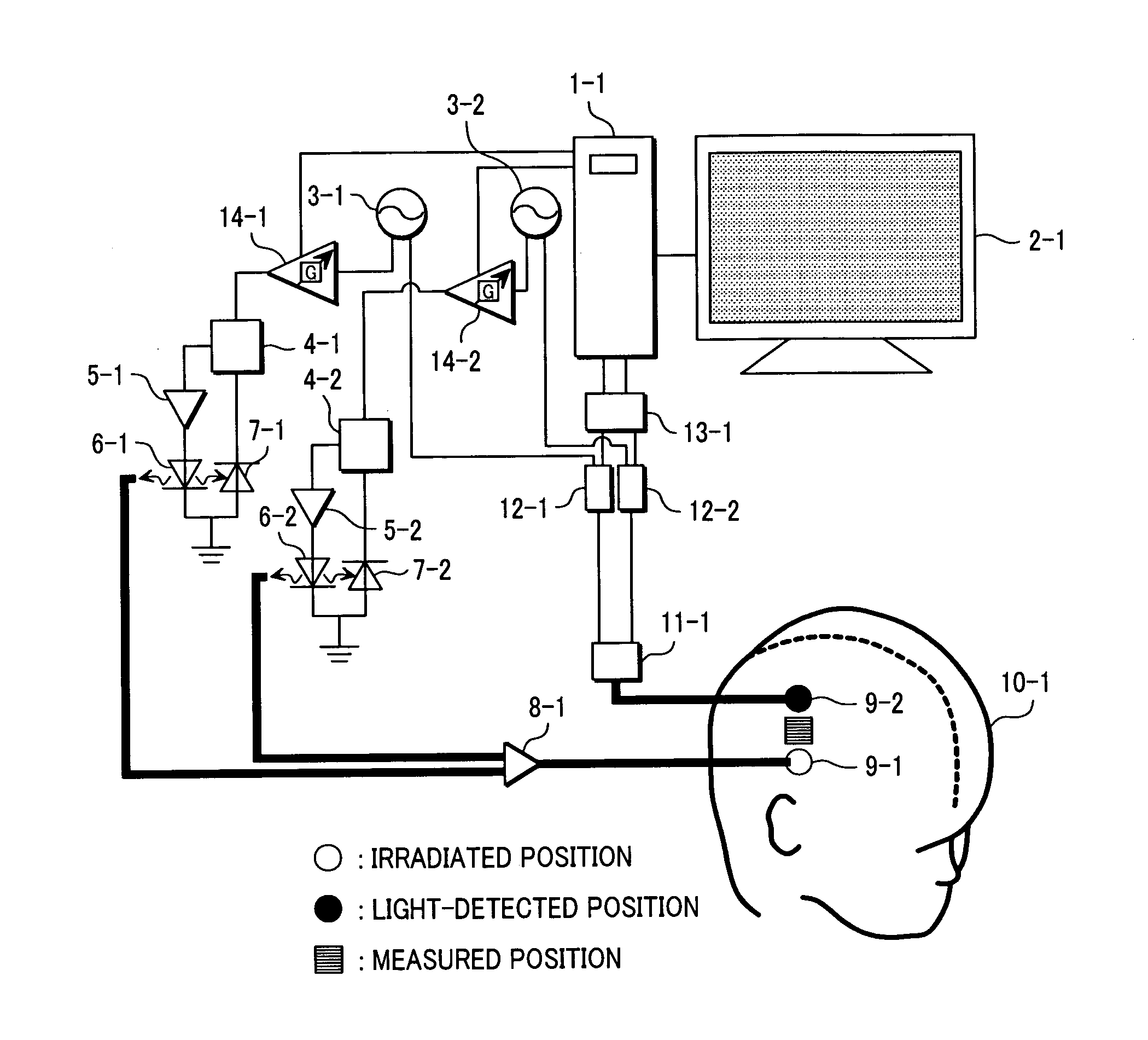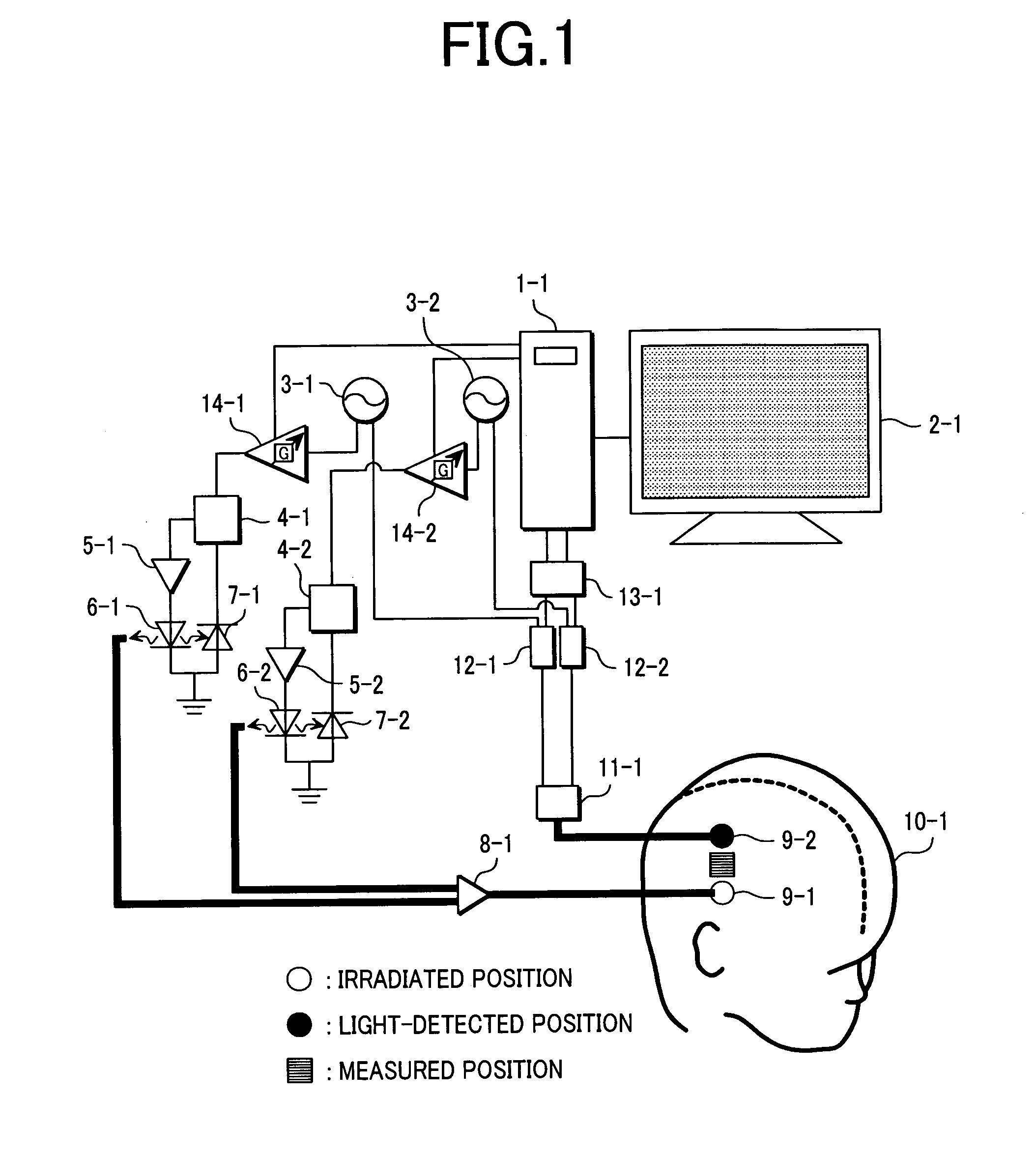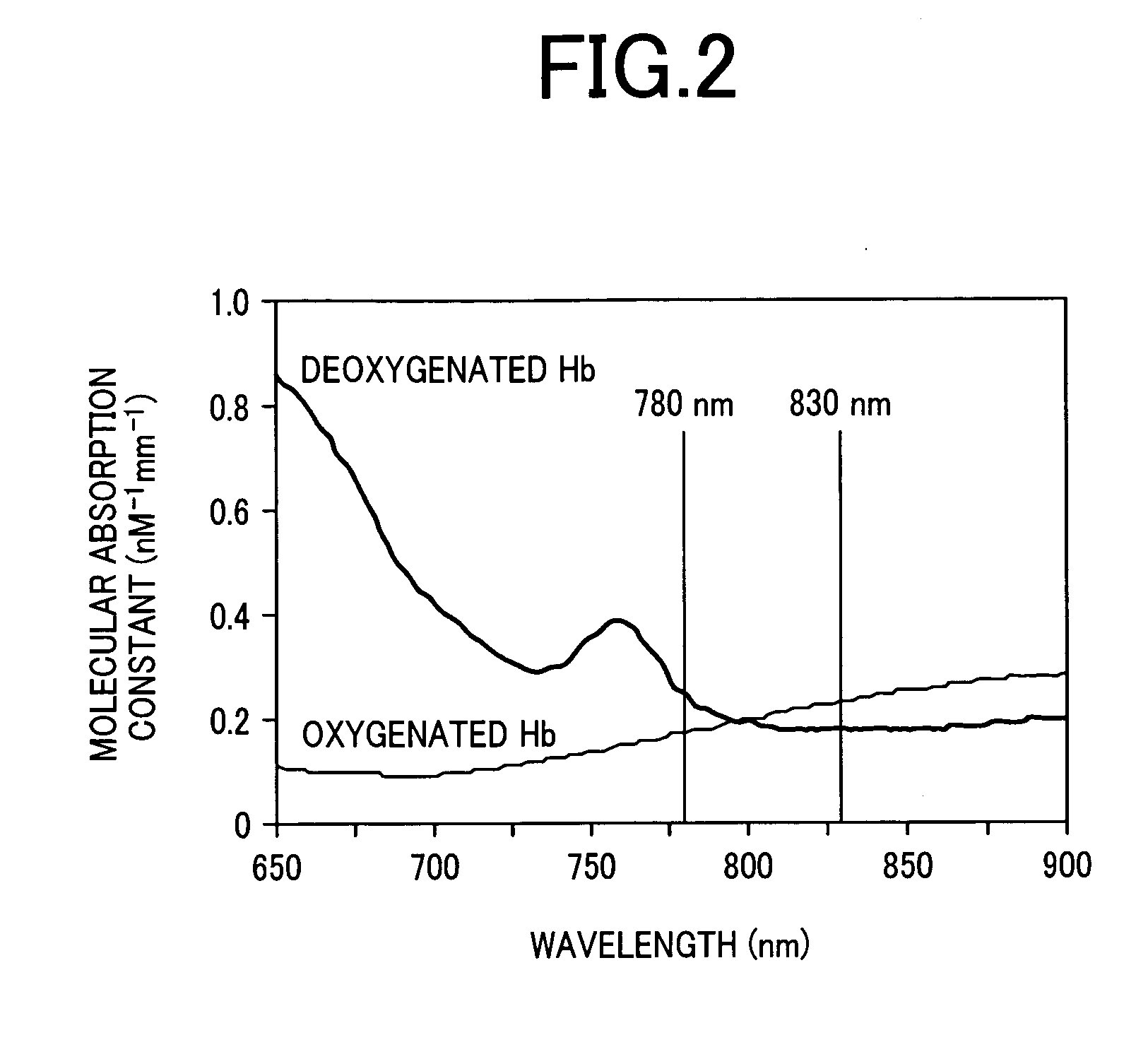Biological photometric equipment
a technology of biochemical and photometric equipment, applied in the field of biochemical photometric equipment, can solve the problems of increasing the transmission light noise, increasing the load on the trial subject, and increasing the time required for measurement, so as to reduce the measurement error, improve the accuracy of measurement, and improve the effect of precision
- Summary
- Abstract
- Description
- Claims
- Application Information
AI Technical Summary
Benefits of technology
Problems solved by technology
Method used
Image
Examples
Embodiment Construction
[0057] An embodiment of the present invention will be described below. In this embodiment, for measurement of changes in densities of oxygenated Hb and deoxygenated Hb in a living body, two types of light different in peak wavelength from each other are used to set a light irradiation position and a light receiving position at respective positions. The same measurement can be performed even when the number of wavelength ranges of irradiated light and of positions for irradiation and receiving light are increased.
[0058]FIG. 16 illustrates a case in which regions to be measured are defined on a trial subject in lattice form and light irradiating units and light receiving units are alternately arranged on nodes of the lattice. A helmet-like anchoring tool 16-3 is set on a trial subject 16-4 and optical fibers for light irradiating units 16-1 and light receiving units 16-2 arranged in lattice form are fixed to holes provided in the anchoring tool. With this configuration, changes in de...
PUM
| Property | Measurement | Unit |
|---|---|---|
| wavelength | aaaaa | aaaaa |
| wavelength | aaaaa | aaaaa |
| wavelength range | aaaaa | aaaaa |
Abstract
Description
Claims
Application Information
 Login to View More
Login to View More - R&D
- Intellectual Property
- Life Sciences
- Materials
- Tech Scout
- Unparalleled Data Quality
- Higher Quality Content
- 60% Fewer Hallucinations
Browse by: Latest US Patents, China's latest patents, Technical Efficacy Thesaurus, Application Domain, Technology Topic, Popular Technical Reports.
© 2025 PatSnap. All rights reserved.Legal|Privacy policy|Modern Slavery Act Transparency Statement|Sitemap|About US| Contact US: help@patsnap.com



